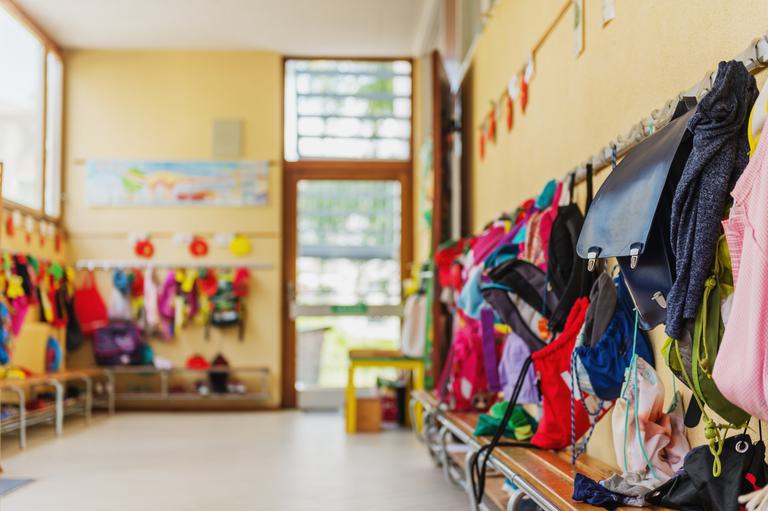
Education
Patrick Gibbons | December 30, 2019
Reading ESAs will put Oklahoma parents in charge
Patrick Gibbons
Florida has been a leading K-12 innovator for years, so it is no surprise it became the first state to offer education savings accounts (ESA) to children enrolled in public schools.
Launched in 2018 to 5,375 students, the Reading Scholarship provides students in third through fifth grade accounts worth up to $500 to pay for tutoring, afterschool and summer school reading programs, books, and other services dedicated to improving literacy.
This year the Florida legislature appropriated $7.6 million to fund the scholarship program.
“It has been a godsend for parents who struggle and can’t afford tutoring for their children.” —Glen Gilzean, CEO of the Central Florida Urban League
Students must be struggling learners, scoring a “1” or “2”, the two lowest scores, on the Florida Standards Assessment. Level “2” students are described as “below satisfactory” and likely needing substantial support for the next grade. Students scoring level “1” are considered to have “inadequate” reading skills and highly likely to need substantial support. Students who are English language learners are given priority.
After they receive their children’s reading scores, parents apply through Step Up For Students, one of two approved nonprofit scholarship administrators in Florida. Once the Florida Department of Education ensures students are enrolled in public schools in eligible grades, parents are awarded a $500 scholarship to help improve the literacy of their child.
For now, parents are reimbursed for purchases within two to three weeks. (However, that system could change. Florida’s other ESA program, the Gardiner Scholarship for students with special needs, functions in a similar method. However, Step Up developed a proprietary software program called “MyScholarShop,” allowing parents to directly purchase products and services through their ESA. To date, the parents of nearly 5,000 children have used MyScholarShop to make over 65,000 purchases totaling $19.2 million. MyScholarShop allows Gardiner parents to directly purchase pre-approved items and services from over 9,000 vendors, tutors, and medical professionals, without having to wait for reimbursement.)
This year 4,039 students have been found eligible for the Reading Scholarship, with 1,690 already funded and more applications on the way.
The Central Florida Urban League in Orlando is a leading proponent of the program, helping hundreds of students apply in the first two years. The chapter even developed and promoted a reading program after partnering with several Orange County public schools.
In the program’s first year, the Central Florida Urban League partnered with nine public schools to provide tutoring to more than 700 disadvantaged students. With the help of the reading scholarship and a $100,000 donation, hundreds of struggling fourth- and fifth-grade students received free tutoring services.
“It has been a godsend for parents who struggle and can’t afford tutoring for their children,” said Glen Gilzean, the CEO of the Central Florida Urban League. Gilzean says other Urban League chapters in Duval, Miami-Dade, and Pinellas counties plan on developing their own partnerships with local public schools.
Charter schools are getting involved, too.
Dayspring Academy may enroll about half of the current Pasco County reading scholarship students, says John Legg, a former state senator who was a primary sponsor of the Gardiner Scholarship and is the CFO of the charter school.
Dayspring offers an hour-long math and tutoring program that meets twice per week during the school year for students in second through fifth grade who score 1, 2, or 3 on the FSA. Dayspring has about 60 students participating in the afterschool program, with nearly 40 enrolled through the Reading Scholarship.
Before the Reading Scholarship was available, the charter school could afford to offer afterschool tutoring for only 30 minutes.
“We could not do this without the Reading Scholarship because the cost would be too great,” Legg said. The math portion of the program is supplemented through a separate grant, according to Legg.
As the program grows, more public schools are expected to participate. Staffers at several school districts, including Liberty, Columbia, and Hillsborough counties, have expressed interest in the program.
“It’s a starting point,” says Gilzean, “but it really does make a difference.”
States wishing to emulate Florida don’t have to copy the program exactly. Since reimbursement programs are harder on low-income families, and many families use the scholarship to pay for tutoring, a program could function as a traditional voucher to be used at schools or tutoring centers. Moreover, eligibility doesn’t have to be limited to public school students or confined to just reading.
Such a program might be available for all students, including private school, charter school, homeschool, and public school students. It might be used to help pay for afterschool and summer school programs, tutoring for reading and math, to help students with disabilities receive speech, behavioral, or occupational therapy, or provide mentoring and job training for at-risk students and students with special needs. Scholarships could even help low-income students gain ground on the “enrichment gap” by using funds for recreational sports, art and music lessons, and after school trips to museums.
Giving parents command of K-12 funding in this way may very well be the future of education.
Florida’s two separate ESA programs come the closest to that future, but no state has blended such a diverse array of options together into one program for all students. The race is on to see which state will be first.
Patrick Gibbons
Former OCPA research assistant Patrick Gibbons (M.A. in political science, University of Oklahoma) is the public affairs manager at Step Up For Students.